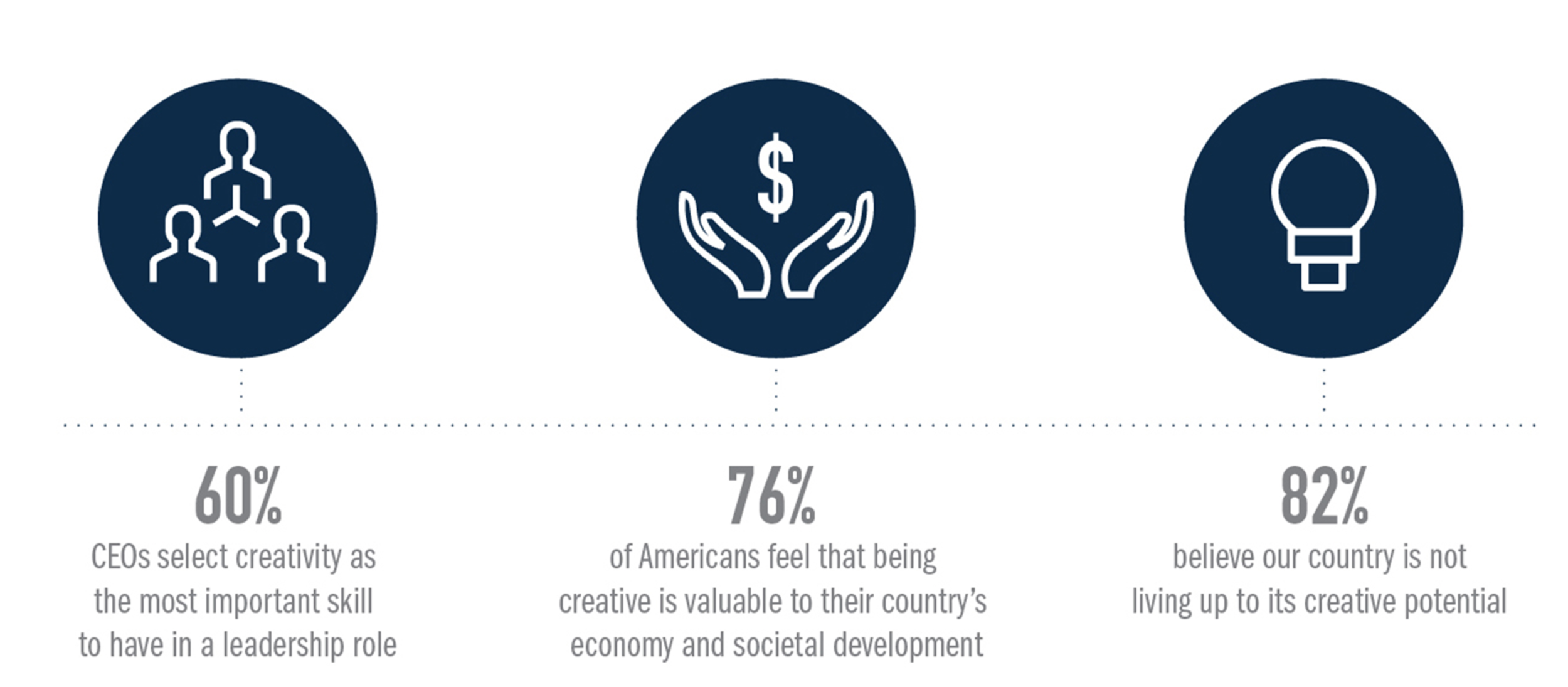Creativity is crucial in the workplace. Many studies have demonstrated the critical role employee creativity plays in the success of a corporate team. 60% of CEOs select creativity as the most important skill to have in a leadership role. 76% of Americans feel that being creative is valuable to their country’s economy and societal development. 82% believe our country is not living up to its creative potential. Most agree that they spend less time creating at work than they do outside of work.
Creativity in the workplace accomplishes two major things:
Internal engagement (performance and culture): A study on meaningfulness in the workplace stated that, “employees find meaningfulness in creative work, which increases work satisfaction and engagement, and, by extension, performance and retention of employees.” The study found that this is especially true if employees believe that they can and will be creative in their work. This deepened engagement aligns with a clarity and appreciation for a company’s mission, which increases productivity and improves corporate culture.
External offerings (new products and services): In the early years of Google’s initial public offering, they implemented the 20% project - allowing engineers to spend 20% of their time on personal passion projects that interested them outside the scope of their daily work. Google’s 20% time initiative developed some of the company’s most prolific products, including Google News, GMail, and AdSense (which now makes up 23%, or $15 billion, of Google’s total ad revenue.
But the issue of implementing creativity cohesively into the workplace is that it lacks sustainability. Google’s 20% time initiative, despite being incredibly fruitful, proved ultimately unsustainable, leading to anecdotal reports of its unofficial termination in 2013. An employee stated that a change in the initiative’s policy, requiring prior approval from reluctant managers whose team productivity was closely monitored, stagnated the program. The problem with creative sustainability is that too often, creative “injections” into the workplace are temporary. Traditional creative engagement initiatives, like workshops, retreats, and even Google’s 20% time initiative, take employees out of their day-to-day existence, aligning the increase of creativity with new conditions that that creativity requires to exist. Recent research by Gensler uncovered a statistical link between the quality and functionality of the workplace and the level of innovation employees ascribe to their organization. High-performing workplaces were ones that created an ecosystem of innovation across the organization. It’s difficult to take an employee out of their daily activity, require that they perform creatively, and then place them back into the old environment expecting their creative performance to translate.
Developing a way for employees to take advantage of all of creativity's benefits while still dedicating enough time and energy to their daily tasks requires the building of a creative infrastructure, which constantly reiterates the benefit and support of persistent creativity.
Make creativity sustainable: an inherent component of an employee’s work, rather than a supplement to. Positively reinforce the necessity of and permission to taking creative risks. Dive deeper and disrupt aggressively to increase the innovation output of your employees and your company.


